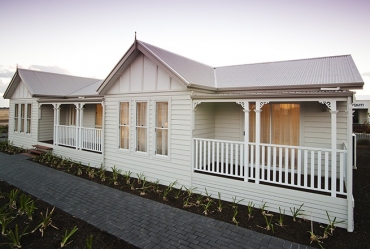Engineered wood is a product that is made by binding various wood particles together into a useable structure. These products must meet certain standards to be approved for use in the building process. Engineered wood can be used in place of steel in certain applications.
Most engineered wood is well rated for fire safety; however, buildings constructed with I-joists and I-beams are of concern to firefighters. These beams are a form of lightweight construction that support floors and roofs in newer buildings.
Engineered wood products tend to require more energy for manufacture than simply milling regular lumber. This downfall is offset by the fact that it can be specially designed for each building and is usually stronger than regular wood. Engineered wood can be designed in many beautiful patterns and will look and feel like wood.
The problem with wood I-beams is that when the building is subject to fire load, these beams will not last as long as steel beams. A lot of engineered lumber burns quicker than regular lumber. If there are breaches in the particle board used, such as duct work holes that were not sealed, the fire will spread even faster.
Often wooden truss systems are fastened together with metal gusset plates. Sometimes they are simply glued together. In either situation, they are at high risk of failing without any warning. Many firefighters have been killed while working inside buildings that were built with wooden I-beams.
What does this mean for the builder? The only real way to ensure the safety of the building and occupants in the case of fire is to prevent the fire in the first place. Basic things like restricting smoking, maintaining a tidy environment and safe cooking go a long way towards preventing fire. Having safety systems such as fire extinguishers and sprinkler systems will help prevent the rapid spread of fire if one does start.
Engineered lumber does have a place in building green buildings, but the risk has to be weighed along with the benefit. Lumber products like Oriental Strand Board or OSB don’t have the same fire resistance as regular plywood, though it is much more economic to purchase.
Besides engineered lumber, some other lightweight construction, and green building products can pose a larger fire risk than traditional materials. Polystyrene insulation that has not been properly approved or installed can burn hotter and faster than proper insulation. It also produces large amounts of toxic gas when it burns. Releasing toxic gas into the atmosphere is obviously something that would not be a green practice, so owners who want to help the environment would definitely want to avoid improper insulation. Good insulation includes spray foam, rigid foam and structural integrated panels (SIP). SIP panels are layers of rigid foam that are mounted between wood or metal. When prepared properly, they are fire resistant and provide a great R-value, so they are a win on both levels.

